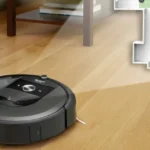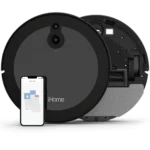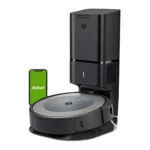Have you ever wished for a vacuum cleaner that could clean your house on its own while you sit back and relax? Well, your wish has been granted in the form of smart vacuum cleaners. These futuristic devices boast advanced technologies and smart features that make cleaning a breeze. But how do they work? In this comprehensive guide, we’ll explore the intricate workings of smart vacuums, from their navigation and cleaning technologies to their smart features and benefits. So, buckle up and get ready to discover the ultimate cleaning companion.
Navigation Technology
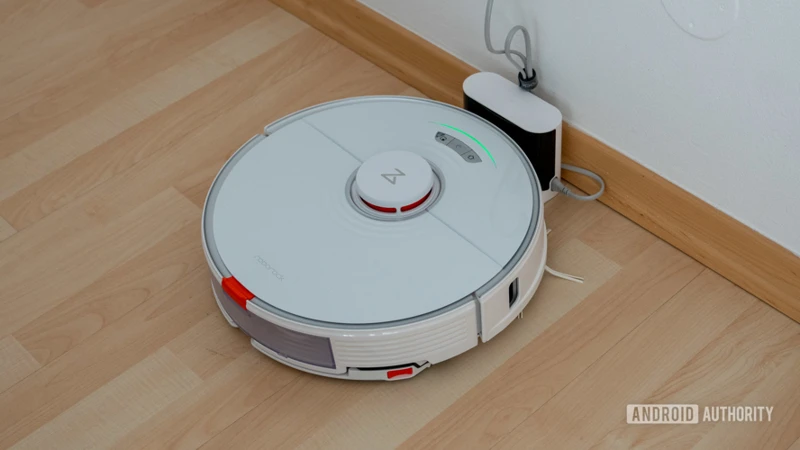
Have you ever wondered how a smart vacuum cleaner knows where to go? The answer lies in the navigation technology that these devices use. Smart vacuums utilize advanced sensors, algorithms, and mapping systems to determine the layout of a room and create a cleaning plan. The most common types of sensors used in smart vacuums are laser, camera, and optical sensors. In this section, we will explore how these navigation technologies work and how they enable smart vacuums to efficiently and effectively clean your home. Additionally, we will discuss the benefits of using app-based control and voice assistants with your smart vacuum, and compare them to traditional manual vacuum cleaners.
Laser Sensors
Laser sensors are one of the key components that make smart vacuum cleaners so efficient in navigating around the house. These sensors work by emitting a spool of laser beams that bounce off surfaces in the room and return to the device, allowing it to create a virtual map of the environment. This process is known as Light Detection and Ranging (LiDAR) technology.
How Do Laser Sensors Work?
Laser sensors emit a 360-degree laser beam from the top of the device. The beam scans the room rapidly and can get a 360-degree view within a few seconds. The beam reflects off of objects in the room and returns to the device, creating an accurate map of the space.
The data collected by the laser sensors enables the device to create a highly detailed virtual map of the room, including objects, walls, furniture, and even people in the area. By using algorithms, it can calculate the distance of objects and navigate around them with ease.
The Benefits of Laser Sensors
The use of laser sensors in smart vacuums provides a number of benefits. Firstly, they help the device to move quickly without bumping into obstacles, which reduces the risk of damage to the furniture or the vacuum itself. The highly accurate mapping enabled by laser sensors and algorithms ensures that the vacuum cleans every inch of the room.
Additionally, LiDAR technology facilitates advanced features like “no-go zones,” which allows users to designate areas in the room that the device cannot access. This feature helps to protect fragile objects and sensitive areas.
Laser sensors are a critical component in the functioning of smart vacuum cleaners. They enable efficient and accurate mapping, making the device highly effective at cleaning. To learn more about the benefits of app-based control for smart vacuum cleaners, click here.
Camera Sensors
Smart vacuum cleaners with camera sensors are becoming increasingly popular due to their advanced navigation capabilities. These sensors work similarly to the human eye, allowing the vacuum to capture images of a room and use them to navigate and clean the space with higher precision.
Advantages of Camera Sensors include:
- Accurate mapping of the entire room.
- Better object detection and avoidance.
- Helps in recognizing and avoiding obstacles like stairs, cliffs and edges, reducing the probability of damage caused by the vacuum.
- Faster cleaning time as a result of more precise movement and coverage.
- Improved scanning of the environment allowing for a more organized and efficient cleaning process.
Smart vacuums that use Camera sensors can help you keep your entire home clean, even those hard-to-reach spaces that may be difficult to clean with a traditional vacuum cleaner. Most of these models can be controlled using a mobile app, which provides you with total control over when, where and how the vacuum should clean.
While the cost of camera-based smart vacuums might be a bit higher than traditional models, they offer significant benefits that outweigh the cost. With the rapid advancements in smart vacuum algorithms, you can rest assured that these vacuums will only become smarter and more reliable with time.
However, one potential limitation of a camera sensor-based vacuum is that it may struggle in low-light settings, although advances in technology have helped to mitigate this issue to an extent.
Camera sensors are making smart vacuums more efficient and accurate cleaning machines that are ideal for those who would prefer to automate their home cleaning tasks. Of course, there are many other factors to consider when choosing between manual and robotic vacuum cleaners, but smart vacuums offer a unique combination of convenience, improved cleaning performance, and top-of-the-line features that are sure to make them valuable additions to any household.
Learn more about robot vs manual vacuum cleaners, and how smart vacuums have some fantastic unique features, such as voice control and advanced algorithms.
Optical Sensors
Smart vacuum cleaners use a variety of sensors to navigate and clean floors with precision. One such sensor technology is optical sensors, which rely on light and reflection to detect obstacles and map out surroundings.
How Optical Sensors Work: Optical sensors emit a beam of infrared light that bounces back to the sensor after hitting an object. The sensor then calculates the distance and location of the object based on the time it took for the beam to return. This information is used to create a map of the environment, guiding the vacuum’s movements.
| Advantages: | Disadvantages: |
|---|---|
| -Fast response time | -Limited range |
| -Accurate mapping | -Susceptible to ambient light interference |
| -Low power consumption | -Requires frequent calibration |
Advantages: Optical sensors have a fast response time and consume less power than other sensor technologies. They are also accurate in mapping out the environment and can detect smaller objects like cables and cords.
Disadvantages: However, optical sensors have a limited range and can be susceptible to interference from ambient light. They also require frequent calibration to maintain accuracy.
Optical sensors are a reliable and effective technology in smart vacuum cleaners, contributing to their ability to navigate and clean efficiently.
Mapping and Localization
Mapping and localization are two important aspects of how smart vacuum cleaners work. Through these processes, the vacuum cleaners are able to navigate around the home and clean efficiently. Mapping involves creating a map of the home, while localization involves identifying their position within that map.
There are several technologies that smart vacuum cleaners use for mapping and localization, including laser sensors, camera sensors, and optical sensors.
| Sensor Type | Pros | Cons |
|---|---|---|
| Laser Sensors |
|
|
| Camera Sensors |
|
|
| Optical Sensors |
|
|
Once the map of the home is created, smart vacuum cleaners use the information for scheduling and navigation. Users can set a cleaning schedule for the vacuum cleaner, and the device will be able to navigate around the home based on the map and localization information. Some smart vacuum cleaners also allow users to set virtual boundaries within their maps, by creating no-go zones or restricted areas where the device should not clean.
Mapping and localization are essential functions that enable smart vacuum cleaners to clean efficiently and navigate throughout the home with ease. By incorporating various sensor technologies, these devices can create detailed maps of the home, which in turn allows for more effective cleaning and scheduling.
Cleaning Technology
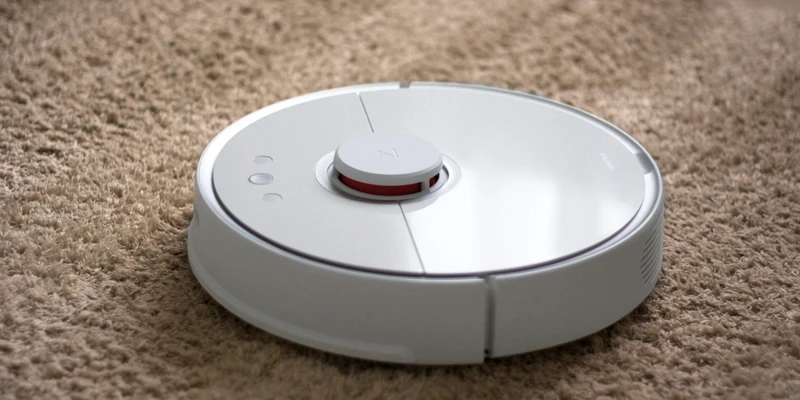
When it comes to cleaning technology, smart vacuum cleaners have revolutionized the way we keep our homes tidy. These devices come equipped with an array of advanced features that allow them to clean floors effectively and efficiently. From specialized bristle brushes to powerful motors, smart vacuums have everything they need to get the job done right. In this section, we’ll take a closer look at the various cleaning technologies that make these devices so effective at keeping our homes clean. So put on your cleaning gloves, and let’s dive into the world of smart vacuum cleaning!
Bristle Brushes
Smart vacuums use advanced cleaning technologies to provide efficient and thorough cleaning of your home. One of the key components of these machines are their brushes. Bristle brushes are one type of brush commonly found in smart vacuums. These brushes have several benefits that make them a popular choice for cleaning various surfaces.
Benefits of Bristle Brushes:
- Effective cleaning: Bristle brushes are designed to effectively clean different types of surfaces, including carpets, hardwood floors, and tiles. They can easily remove dirt, dust, and pet hair from these surfaces, ensuring that your home is clean and free of allergens.
- Durable: Bristle brushes are usually made of high-quality materials that make them durable and long-lasting. They can withstand regular use and do not get damaged easily.
- Easy to Maintain: Bristle brushes are often easy to clean and maintain. You can use a brush cleaning tool to remove any debris or tangled hair from the brushes. This helps to prolong their lifespan and ensures their optimal cleaning performance.
- Quiet: Bristle brushes are often quieter than other types of brushes, which makes them an ideal choice for those who want to clean their home without causing any disturbance.
While bristle brushes are effective cleaning tools, they do have some limitations. For instance, they may not be suitable for cleaning delicate or sensitive surfaces, such as silk or satin. Additionally, they may not be as effective in picking up fine dust particles or debris as other types of brushes.
Despite these limitations, bristle brushes remain a popular choice for smart vacuums due to their effectiveness, durability, and ease of maintenance. When used correctly, they can help ensure that your home is clean and free of dust, dirt, and allergens.
Rubber Extractors
Rubber extractors are a technological innovation in the world of smart vacuum cleaners that have revolutionized the cleaning process. Instead of using bristle brushes, rubber extractors take a new approach to cleaning floors – with rubber paddle blades that rotate in opposite directions.
Here are some of the benefits of using rubber extractors:
- Improved Performance: Rubber extractors are highly efficient and perform better compared to traditional bristle brushes. They can pick up dirt, debris, and pet hair from floors and carpets with ease, leaving them visibly cleaner.
- No Tangles: Traditional bristle brushes often get tangled with hair and debris, making them less effective. On the other hand, rubber extractors are tangle-free and can work continuously without getting stuck or losing suction power. The rubber paddle blades rotate in opposite directions, providing an uninterrupted cleaning process.
- Easy Maintenance: Rubber extractors are easy to clean and maintain. Unlike bristle brushes, you don’t have to worry about manually removing tangled hair or debris. The rubber blades can be washed with water, and any remaining debris can be easily removed with a brush.
- Quieter Cleaning: Rubber extractors operate quietly, making them an ideal choice for homeowners who prefer a quieter cleaning process.
Rubber extractors prove to be efficient, easy to maintain, and quieter than traditional bristle brushes. They are a great option for anyone looking to improve the performance and lifespan of their smart vacuum cleaner.
Filtration Systems
Smart vacuums don’t just suck up dirt and debris from floors and surfaces, they are also equipped with filtration systems that ensure the air released back into the room is clean and free of allergens. These systems vary from brand to brand, but typically consist of multiple filters that work together to trap different types of particles.
Here are some of the commonly used filtration systems in smart vacuums:
- HEPA filters: High-efficiency particulate air (HEPA) filters are designed to capture tiny particles as small as 0.3 microns. These filters are effective at trapping dust, pollen, pet dander, and other allergens that can trigger asthma and allergy symptoms.
- Carbon filters: Carbon filters are used to eliminate odors and volatile organic compounds (VOCs) from the air. These filters contain activated carbon which absorbs and neutralizes unwanted smells and chemicals.
- Pre-filters: Pre-filters are the first line of defense against larger particles like hair and dirt. These filters are washable and reusable, and are designed to protect the other filters in the system from clogging up.
- Ultrafine filters: Ultrafine filters are used to capture even smaller particles than HEPA filters. These filters are designed to trap fine dust and bacteria, as well as some viruses.
By using a combination of these filters, smart vacuums are able to provide cleaner and healthier indoor air quality, making them ideal for households with pets or allergy sufferers. However, it is important to note that these filters need to be regularly cleaned or replaced to maintain their effectiveness. Failure to do so may result in reduced suction power or even damage to the vacuum itself.
Powerful Motors
When it comes to smart vacuum cleaners, a powerful motor is an essential component to ensure efficient cleaning. The motor is responsible for generating suction power that is strong enough to pick up dirt, dust, and debris from different surfaces. Here’s a breakdown of what makes a powerful vacuum motor:
| Motor Type | Description |
| Brushless DC Motor | This type of motor utilizes electronic commutation instead of mechanical brushes. It has a longer lifespan, lower noise level, and higher energy efficiency compared to traditional motors. |
| Cyclonic Motor | This type of motor uses a cyclonic action to create a strong suction that separates dust and debris from the air. The separated dirt is then moved to the dustbin, while the clean air is released through the vacuum’s exhaust. |
| Universal Motor | This type of motor is commonly found in handheld and portable vacuums. It is lightweight and small, but has a high power output. However, it is also noisy and prone to overheating. |
Apart from the motor type, the power rating also matters. Most smart vacuums have a power rating of around 1000-2000 watts, which is adequate for most cleaning tasks. Additionally, the motor should be designed to work with the cleaning attachments, such as the brushes and extractors, to provide optimal cleaning performance.
A powerful motor is a crucial component of smart vacuum cleaners, and its type and power rating should be considered when choosing a vacuum that suits your cleaning needs. With a powerful motor, you can enjoy a fresher and cleaner home with less effort.
Smart Features
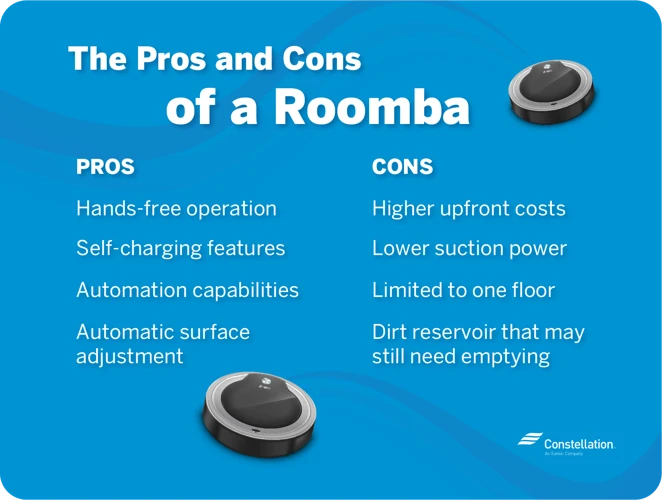
When it comes to modern cleaning devices, smart features have taken the world by storm. From mobile apps to voice controls, smart vacuums are often a top choice for those looking to keep their homes clean with minimal effort. These devices are packed with advanced technologies and features that make cleaning convenient and efficient for users. In this section, we’ll explore the various smart features that come with smart vacuums and how they improve the overall cleaning experience. So, let’s dive into the world of smart vacuums and explore what they have to offer.
Mobile Apps
Smart vacuum cleaners come with mobile apps that make it easy for users to control and monitor the device. These apps are compatible with both iOS and Android operating systems, making them accessible to a majority of users. The functionalities of these apps vary between models, but most of them include the following features:
1. Intuitive Interface: The mobile app usually features an intuitive interface that allows the user to control the vacuum cleaner with a few taps on their smartphone or tablet. It displays real-time information about the cleaning process, such as the area covered, battery life and time remaining.
2. Remote Control: The mobile app enables users to control the vacuum cleaner from anywhere, as long as they have an internet connection. This feature allows users to start, stop or pause the cleaning process from their office, while running errands or even while on vacation.
3. Customization: Most mobile apps come with customization options that allow users to adjust the settings of the vacuum cleaner to suit their needs. For instance, users can control the suction power and set cleaning schedules to clean specific areas of their homes at specific times.
4. Notifications: The app sends notifications to the user’s smartphone or tablet when the cleaning process is complete, when there’s an obstacle hindering the device’s path or when the battery is low.
5. Voice Control: Some mobile apps also offer voice control options that allow users to start, pause or stop the vacuum cleaner by issuing voice commands. This feature is particularly beneficial for people with physical limitations or those who prefer hands-free control.
The mobile apps make it easy for users to control and monitor their smart vacuum cleaner, which ultimately saves them time and increases efficiency.
Voice Control
One of the most convenient features of smart vacuums is voice control, which allows users to control the device with simple voice commands. With the rise of virtual assistants such as Amazon Alexa and Google Assistant, many smart vacuums have become compatible with these platforms, making it easier than ever to control them hands-free.
The following table is a list of some popular smart vacuums and their compatibility with virtual assistants:
| Brand | Virtual Assistant Compatibility |
|---|---|
| iRobot Roomba | Amazon Alexa, Google Assistant, Apple HomeKit |
| Ecovacs Deebot | Amazon Alexa, Google Assistant |
| Shark IQ Robot | Amazon Alexa, Google Assistant |
| Neato Botvac | Amazon Alexa, Google Assistant, Apple Watch, Facebook Messenger |
Using voice control, users can start, stop, pause or even schedule cleaning sessions with ease. For instance, with Amazon Alexa, users can start the vacuum by saying “Alexa, ask Roomba to start cleaning”. Voice control allows users to clean their homes while they’re doing other tasks, making the cleaning process effortless and freeing up more time.
Voice control can also be used for maintenance purposes, such as checking the status of the vacuum, getting alerts and updates on its performance and requesting battery levels. This feature adds to the convenience of smart vacuums, making them valuable assistants in any home.
However, it is important to ensure that the virtual assistant and smart vacuum are compatible before making a purchase as not all vacuums are compatible with all virtual assistants. Users must ensure that their virtual assistant is properly set up and can recognize their voice commands accurately.
Scheduling
One of the most convenient features that a smart vacuum cleaner offers is the scheduling function. With this function, you can set a specific time for the vacuum to start cleaning your home. This is an incredibly useful feature for busy individuals who don’t have the time or energy to clean their homes themselves.
By using the scheduling feature, you can ensure that your home stays clean and tidy without having to lift a finger. You can program the vacuum to start cleaning at a specific time on specific days, allowing you to have a consistently clean home without worrying about scheduling cleaning sessions.
Table:
| Benefits of Scheduling Feature | Explanation |
|---|---|
| Convenience | You can set a specific time for the vacuum to start cleaning, allowing you to have a consistently clean home without worrying about scheduling cleaning sessions. |
| Time-Saving | You won’t have to manually start the vacuum each time you want your floors cleaned, freeing up time to focus on other tasks. |
| Increased Efficiency | The vacuum will start cleaning at a specific time, ensuring that your floors are consistently clean and free of dirt and debris. |
The scheduling feature is a convenient and time-saving function that can make your life easier. By setting a schedule, you can ensure that your home stays clean and tidy without any additional effort on your part.
Automatic Recharging
Smart vacuums come equipped with a feature that allows them to recharge themselves automatically when they run out of power. This feature enables the vacuum to work round the clock, without human intervention.
The automatic recharging feature is made possible by the vacuum’s onboard battery. When the battery gets low, the vacuum stops working and returns to its docking station to recharge. The charging process is typically fast, taking only a few hours to complete. Once the battery is fully charged, the vacuum resumes its cleaning task where it left off.
This feature is particularly convenient for busy homeowners who do not have the time to monitor their vacuum’s battery level constantly. It also ensures that the vacuum is always ready to clean the entire house, without interruption.
To ensure that the battery stays healthy and lasts longer, most smart vacuums come equipped with charging technology that prevents overcharging. Overcharging can cause battery damage and reduce the vacuum’s cleaning performance over time. The charging technology monitors the battery and automatically stops charging once it’s full, preventing any damage.
The table below summarizes the automatic recharging feature of smart vacuums:
| Feature | Explanation |
|---|---|
| Automatic Recharging | The vacuum returns to its charging dock when the battery is low and resumes cleaning when the battery is full. |
| Quick Charging | The charging process is typically fast and takes only a few hours to complete. |
| Prevents Overcharging | The charging technology stops charging once the battery is full, preventing any damage or reduced performance over time. |
The automatic recharging feature is a game-changer, adding more convenience to the already impressive list of features offered by smart vacuums. It allows homeowners to enjoy a clean home without worrying about the vacuum running out of power or requiring constant monitoring.
Benefits of Smart Vacuums
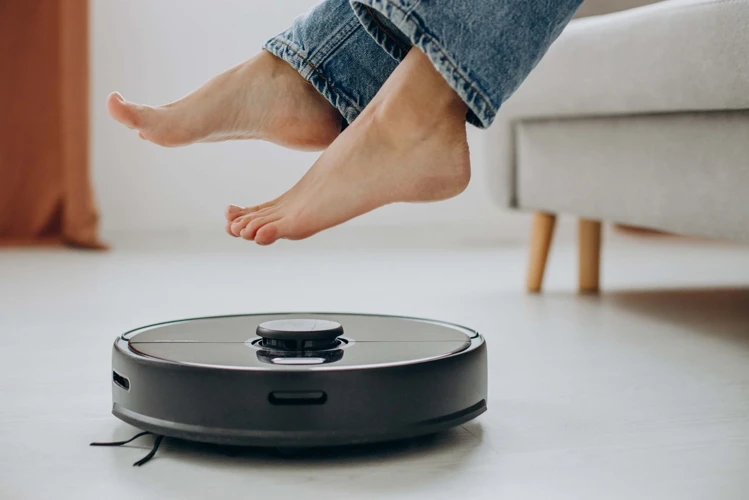
As we continue to embrace the age of smart technology, we’re finding more and more ways to simplify our daily lives. Smart vacuum cleaners have quickly become a popular choice among homeowners because of their efficiency, convenience, and powerful cleaning capabilities. But the benefits of these high-tech cleaning machines go far beyond just their cleaning power. In this section, we’ll take a closer look at some of the advantages of owning a smart vacuum cleaner. From increased efficiency and productivity to better cleaning performance, you’ll soon understand why so many people are choosing to make the switch to a smart vacuum.
Increased Efficiency and Productivity
One of the greatest benefits of smart vacuum cleaners is their ability to greatly increase efficiency and productivity in the cleaning process. Compared to traditional vacuum cleaners, smart vacuums are able to clean autonomously and without human intervention, freeing up time and energy for other tasks.
Here are some ways in which smart vacuums increase efficiency and productivity:
| Benefit | Description |
|---|---|
| Automated Cleaning | Smart vacuums are designed to clean autonomously, which means that they do not require constant supervision or human intervention. This allows users to free up time and energy for other important tasks. |
| Smart Navigation Technology | The advanced navigation technology in smart vacuums enables them to clean efficiently and without missing any spots. They are equipped with sensors that help them to navigate around obstacles and objects, ensuring a complete and thorough clean. |
| Scheduling | Smart vacuums can be programmed to clean on a schedule that works for the user. This means that the vacuum can be set to clean at a specific time each day or week, ensuring that the user always returns to a clean home or office. |
| Mobile App Control | Many smart vacuums come with a mobile app that allows users to control and monitor the vacuum from anywhere. This allows users to start, stop, or schedule cleaning sessions remotely, increasing their productivity and flexibility. |
| Voice Control | Some smart vacuums can be controlled using voice commands, which makes it even easier to start or stop cleaning sessions without having to physically interact with the vacuum. |
The efficiency and productivity gains that come with using a smart vacuum cleaner can be significant. By automating the cleaning process and utilizing advanced navigation technology, scheduling options, and mobile app or voice control, a smart vacuum can help users to save time and energy while still maintaining a clean and healthy environment.
Convenience and Time-Saving
One of the biggest advantages of smart vacuum cleaners is the convenience they offer. They take the hassle out of keeping your home clean and tidy. With the ability to schedule cleaning sessions, you can simply set it and forget it. This means that you can go about your day without worrying about when you will find the time to vacuum.
Another convenience factor is the ability to control smart vacuums through a mobile app or even voice control technology. This means that you can start or stop a cleaning session from anywhere in your home. If you need to pause the vacuum to pick up something, you can do so without having to physically touch the device.
Smart vacuums also save time by cleaning more efficiently. They are equipped with advanced technology that allows them to navigate around obstacles and clean corners, under furniture and other hard-to-reach areas without requiring human intervention. With their powerful motors and advanced cleaning systems, they can clean much faster than a traditional vacuum, allowing you to use your time on other important tasks.
Additionally, smart vacuums are designed to be lightweight and easy to maneuver. They don’t require any physical effort or strain, so you can easily move them around your home without getting tired or sore.
In summary, the convenience and time-saving benefits of smart vacuum cleaners are numerous. With their advanced features and technology, they can save you time and effort while keeping your home clean and tidy. The ability to control and schedule cleanings from a mobile app or through voice control means you can easily fit cleaning into your busy schedule without having to make any major changes to your routine.
Better Cleaning Performance
Smart vacuum cleaners are designed to clean various types of flooring with better efficiency and performance. Here are some features that contribute to the better cleaning performance:
- Powerful Motors: Smart vacuums come with powerful motors that can generate strong suction to lift dirt and debris from both hard and carpeted floors. These motors also help to improve the vacuum’s ability to pick up pet hair and other stubborn debris.
- Bristle Brushes: Some smart vacuums are equipped with bristle brushes that loosen dirt and dust from carpets and other soft surfaces. These brushes are ideal for cleaning high-traffic areas and removing embedded dirt from carpets.
- Rubber Extractors: Rubber extractors are another cleaning feature found in some smart vacuums. These extractors are designed to grab and remove dirt and debris from floors without damaging the surface. They also prevent hair tangling, making it easier to clean your vacuum.
- Filtration Systems: Smart vacuums are typically equipped with advanced filtration systems that can capture microscopic dust and allergens. These filters help to improve indoor air quality and are especially beneficial for allergy sufferers.
All of these features work together to provide better cleaning performance for your home. Smart vacuums are also able to navigate around obstacles and under furniture for a more thorough cleaning. As a result, a smart vacuum cleaner can save you time and energy while keeping your floors cleaner and healthier for you and your family.
Limitations of Smart Vacuums
Smart vacuums are becoming increasingly popular due to their convenience and efficiency. However, like any other technology, they come with limitations that users should be aware of. It’s essential to weigh its benefits and limitations before investing in one. In this section, we’ll dive into some of the downsides of smart vacuums that you should keep in mind before making a purchase.
Higher Cost
While smart vacuum cleaners offer a range of benefits, one of the major limitations is their cost. Compared to traditional vacuum cleaners, smart models can be significantly more expensive.
The table below compares the prices of popular smart and traditional vacuum cleaners:
| Vacuum Cleaner | Type | Price |
|---|---|---|
| Roomba i7+ | Smart | $799 |
| Shark Navigator Lift-Away | Traditional | $179 |
| Xiaomi Mi Robot Vacuum | Smart | $429 |
| Dyson V11 Animal | Smart | $599 |
| Bissell PowerEdge | Traditional | $69 |
As seen in the table, the cost of smart vacuum cleaners can be around 3-5 times higher than traditional models. However, it is important to note that smart vacuums come with advanced technology and features that cannot be found in traditional vacuum cleaners.
Investing in a smart vacuum cleaner can save time and effort in cleaning. Its automatic cleaning and scheduling feature can help homeowners clean their homes without manually operating the vacuum cleaner. Smart vacuums can make the cleaning process more efficient and effective, and help maintain a cleaner home.
While the initial cost of smart vacuum cleaners may be higher, they provide a high return on investment in the long run. The higher cost can be considered as a worthwhile investment in the quality and convenience of cleaning.
Not Ideal for Large Homes
Smart vacuum cleaners are a great addition to any household with their advanced navigation and cleaning technology, as well as their convenient and time-saving smart features. However, it is important to note that these devices may not be ideal for larger homes.
Here are some reasons why:
- Limited Battery Life: Smart vacuum cleaners run on battery power, and while many have the ability to automatically recharge, the battery life may not be sufficient for larger homes. This means that the device may need to recharge multiple times during a cleaning cycle, which can be time-consuming and frustrating.
- Small Dustbin: The dustbin in a smart vacuum cleaner is typically smaller than that of a traditional vacuum cleaner. This means that it will need to be emptied more frequently, which can be a hassle for larger homes with more surface area to cover.
- Navigation: While smart vacuum cleaners have advanced navigation technology, they may still struggle with larger homes with more complex layouts. They may struggle to efficiently cover every corner of larger homes, and may need to be manually guided to certain areas.
So, what does this mean for larger homes?
It’s important to consider the size and layout of your home before investing in a smart vacuum cleaner. If you have a larger home, it may be more efficient and effective to stick with a traditional vacuum cleaner that has a larger dustbin and longer battery life. However, if you still prefer the convenience of a smart vacuum cleaner, you may need to be prepared to empty the dustbin more frequently and guide the device to certain areas in your home.
While smart vacuum cleaners are a great tool for many households, they may not be ideal for larger homes due to their limited battery life, small dustbin, and navigation challenges.
Requires Regular Maintenance
Smart vacuums might seem like the answer to every homeowner’s cleaning woes, but it’s important to keep in mind that they do require regular maintenance to keep them in good working condition. Here’s a breakdown of the different types of maintenance required for smart vacuums:
| Type of Maintenance | Description |
|---|---|
| Filter Replacement | Smart vacuums have advanced filtration systems such as HEPA filters that trap even the smallest particles. However, these filters need to be regularly cleaned or replaced to ensure the vacuum is working efficiently and to maintain optimal air quality in the home. |
| Brush Roll Cleaning | The brush rolls of smart vacuums accumulate hair and debris over time, leading to reduced efficiency in cleaning. Regular cleaning of the brush rolls will help to maintain the suction power of the vacuum. |
| Wheel Cleaning | The wheels of a smart vacuum can become clogged with dirt and debris, affecting the overall performance of the vacuum. Cleaning the wheels regularly ensures smooth movement of the vacuum and improves its cleaning effectiveness. |
| Battery Maintenance | Smart vacuums run on a rechargeable battery, and proper maintenance of the battery is essential for the vacuum to function optimally. Over time, the battery may lose its capacity to hold a charge, and it may need to be replaced to ensure the vacuum keeps running efficiently. |
Regular maintenance of smart vacuums will not only ensure that they work efficiently, but it will also prolong their lifespan. It’s important to consult the manufacturer’s manual for specific maintenance instructions to avoid damaging the vacuum.
Conclusion
In conclusion, smart vacuum cleaners have revolutionized the way we clean and maintain our homes. They use advanced navigation and cleaning technologies like laser sensors, mapping, bristle brushes, and powerful motors to clean efficiently and effectively.
Moreover, smart vacuums come with a range of convenient features like mobile apps, voice control, scheduling, and automatic recharging, which make cleaning more convenient and less time-consuming.
Undoubtedly, these devices have numerous benefits, including increased efficiency and productivity, convenience, and better cleaning performance. They allow us to focus on other important tasks without worrying about cleaning.
However, smart vacuums are not without their limitations. They have a higher cost compared to traditional vacuum cleaners, and they may not be ideal for large homes as they require regular maintenance, and some models have a shorter battery life.
Overall, if you have a smaller home, are willing to invest in a quality device, and are looking for a more efficient and convenient way of cleaning, then a smart vacuum cleaner might be a great option for you. With their advanced technologies and smart features, they make cleaning less of a chore and more of a hassle-free task.
Frequently Asked Questions
How do smart vacuum cleaners navigate through the room?
Smart vacuum cleaners use different navigation technologies like laser sensors, camera sensors, or optical sensors to create a map of the room and navigate around obstacles.
What kind of sensors do smart vacuum cleaners use?
Smart vacuum cleaners use laser sensors, camera sensors, and optical sensors to detect obstacles, cliffs, and walls in the room.
Do smart vacuum cleaners come with mobile apps?
Yes, most smart vacuum cleaners come with their mobile apps, which give users control over the cleaning process and allow them to customize their cleaning preferences.
How can I control a smart vacuum cleaner with my voice?
Smart vacuum cleaners come with voice control features that allow users to give them commands using voice assistants like Amazon Alexa or Google Assistant.
Do smart vacuum cleaners come with scheduling features?
Yes, most smart vacuum cleaners come with scheduling features that allow users to schedule cleaning times according to their preferences, even when they’re away from home.
How often do I need to replace the brushes on a smart vacuum cleaner?
It depends on the type of brush and the frequency of use, but generally, the brushes on smart vacuum cleaners need to be replaced every 6 to 12 months.
How do I maintain the filter on a smart vacuum cleaner?
To maintain the filter on a smart vacuum cleaner, you need to clean it regularly, depending on the frequency of use, and replace it every 6 to 12 months.
What is the maximum coverage area of a smart vacuum cleaner?
The maximum coverage area of a smart vacuum cleaner varies from model to model, but most of them can cover up to 1000 square feet in a single cleaning cycle.
Can smart vacuum cleaners clean carpets and hardwood floors?
Yes, most smart vacuum cleaners come with different cleaning modes and accessories that allow them to clean carpets, hardwood floors, and other surfaces with high efficiency.
What is the average lifespan of a smart vacuum cleaner?
The average lifespan of a smart vacuum cleaner depends on the brand and the frequency of use, but most of them can last for up to 5 years with proper maintenance.




